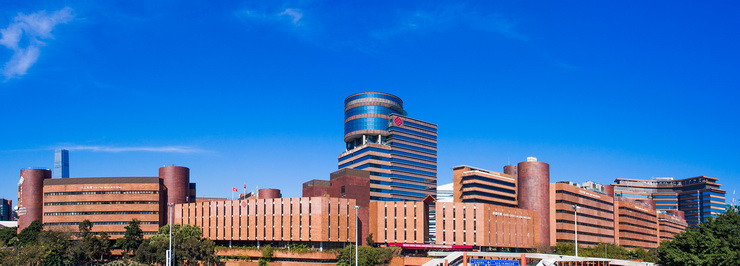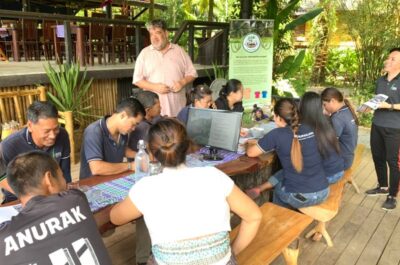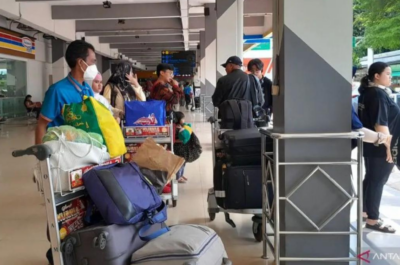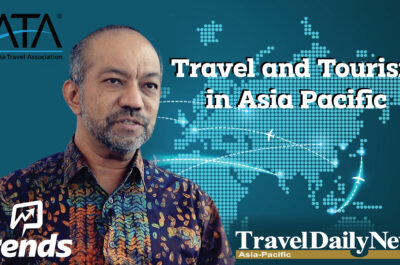The researchers showed that as more and more people migrate permanently abroad, they are increasingly turning to tourism as a way to retain social and emotional ties with their homelands.
International migrants abroad offer an invaluable market for destination tourism, according to Dr Sabrina Huang, Dr Kam Hung of the School of Hotel and Tourism Management (SHTM) at The Hong Kong Polytechnic University and a co-researcher. In a pioneering study sampling overseas Chinese in North America, the researchers recently showed that as more and more people migrate permanently abroad, they are increasingly turning to tourism as a way to retain social and emotional ties with their homelands. However, the travel behaviour of these “diaspora tourists” is as diverse as the communities they come from. The researchers suggest that understanding the tourism needs of different generations of migrants can help destination marketers to attract as many homecoming migrants as possible.
Memories of home are like time capsules from the past. In today’s world of global movement, the researchers note, when “more and more people can trace their family roots to another part of the world”, the longing to return home can be particularly strong. The desire to go further than remembering, to physically return to and reconnect with places from the past, often inspires people to travel.
Nowadays, the yearning for home may not necessarily result in a permanent return to one’s homeland. Instead, it may take the form of tourism. A special case is that of people who have migrated abroad who return temporarily to their ancestral homelands – a trend known as diaspora tourism.
Although diasporas encompass an enormous range of migrant populations worldwide, they are united by their strong sense of community and desire to remain connected to their places of origin. As travelling becomes more convenient and affordable, going “home” regularly to visit relatives, trace one’s family roots or simply enjoy the local cuisine is becoming easier and easier.
It is not hard to see the potential benefits of diaspora tourism for destination countries. The researchers point out that diaspora or “homecoming” tourists are a “significant market segment”, as they visit their home countries often and may stay for weeks or even months. Just as important is their strong sense of attachment to their destinations, which makes them “supportive of local development and heritage conservation”.
Curiously, however, we still know little about how this sense of attachment to a former or ancestral home affects people’s travel decision making. The researchers pinpoint an important unanswered question. “How big is this ‘home’?” they ask. “Is it the actual house, neighborhood, hometown or home country?”
Answering questions like these is not easy, because diaspora tourists vary enormously. In the last decade alone, more than 4 million people migrated permanently to foreign countries every year. How they feel about their homelands is “largely dependent on the original contexts of their exit”, according to the researchers. Whereas some are forced to flee their homes by war or oppression, others travel abroad to find new jobs and secure better lives for their families.
As diverse as people’s reasons for leaving are their motivations to return. Diasporic Jews may return to Israel as a form of pilgrimage, whilst European emigrants prefer ancestral or genealogical tourism. Many recent migrants who are still in touch with their families back home return to attend weddings and funerals and participate in family rituals.
Along with their “complex migration histories and national origins”, add the researchers, diaspora tourists vary significantly by generation. Compared with their children and grandchildren, first-generation migrants have more personal experience of their homelands and closer social connections with friends and relatives there.
Yet little quantitative research has been done on how these and other important differences affect the future travel behaviour of transnational migrants. To cast light on this issue, and ultimately to find ways of enhancing tourism in destination countries, the researchers set out to compare migrant generations in terms of their motivations for diaspora tourism and examine the notion of “homeland” as home country vs hometown.
The first step was to develop and pilot-test a questionnaire measuring the place attachment, travel motivation and travel intention of Chinese diaspora tourists. Then, the researchers used the questionnaire to gather detailed information from 808 overseas Chinese respondents living permanently in the United States and Canada.
Focusing on the Chinese diaspora in North America enabled the researchers to “highlight the geographical and cultural distance between immigrant sending and receiving nations”. The continent is home to huge numbers of international immigrants, and people with Chinese ethnicity are no exception, with populations exceeding 4.8 million in the United States and 1.7 million in Canada.
The respondents were fairly evenly distributed in terms of age and gender. About 30% were first-generation migrants, having been born in mainland China, Hong Kong or Macau and then migrated to North America. Second-generation migrants made up 38% of the sample, 13% were third-generation migrants and 19% belonged to the fourth generation or later. Around 80% of the respondents had been to China, and most had stayed for a maximum of 7-14 days.
A series of statistical analyses of the survey data yielded some intriguing insights into diaspora tourism. The findings not only contribute to research on migration and diaspora tourism, but also have important implications for destination marketing organisations (DMOs) in home countries, especially those with large numbers of international migrants living abroad, such as China, Mexico and the Philippines.
The results suggest that overall, Chinese diaspora tourists have a strong sense of social and emotional attachment to their homeland, which powerfully motivates them to return. To bring tourism income to as many local communities as possible, DMOs in home countries should thus design advertising campaigns that specifically target homecoming tourists abroad and highlight social and emotional bonds with their destinations.
The next finding was more surprising. Although transnational ties are generally believed to wither down the generations, the researchers discovered that the third- and fourth-generation respondents were actually more attached to their home country, China, than members of the second generation. Young people whose ancestors migrated several generations ago may thus be taking increasing interest in their ethnic origin, in what the researchers term a paradigm shift “from assimilation to transnationalism”.
Aside from their shared love for Chinese cuisine, generations of diaspora tourists can even be grouped into “distinct market segments”, argue the researchers. As the later generations expressed a stronger attachment to home country than hometown, and a greater appreciation for Chinese culture than family heritage, marketing for this segment should have a national rather than a local flavour. Native-born Chinese are better enticed by a message that stresses “social connection and culture”, advise the researchers.
Tourism is one of the ways in which international migrants today maintain physical and emotional ties with their home countries. The researchers extend the scope of both migration and tourism studies by showing that migrants’ homeland attachment significantly motivates their travel decision making, and indicating ways in which DMOs can most effectively target and segment this influential market of tourism consumers.
However, their findings are based solely on the overseas Chinese population in North America. Chinese migrants today are members of a labour and trade diaspora shaped by China’s economic rise, and thus have strong ties with their homeland. The researchers thus suggest that further studies are needed to determine whether the same conclusions apply to other modern diasporic groups, such as refugees, for whom the prospect of returning home at all, let alone for tourism, is likely to be far more distant.
Wei-Jue Huang, Kam Hung and Chun-Chu Chen. (2018). Attachment to the Home Country or Hometown? Examining Diaspora Tourism Across Migrant Generations. Tourism Management, 68, 52-65.
Theodore is the Co-Founder and Managing Editor of TravelDailyNews Media Network; his responsibilities include business development and planning for TravelDailyNews long-term opportunities.











































































